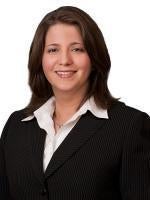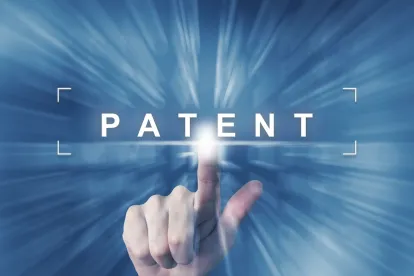Changes in patents are afoot that will have a significant effect on the insurance and financial industries. Although business method patents have been the pariah of the patent industry for the past few years,
-
The courts are starting to analyze these patents in greater detail and finding many more business methods to be patentable;
-
The U.S. Patent and Trademark Office (USPTO) is adopting new rules for how to deal with applications for business method patents; and
-
Bipartisan groups in Congress are studying what new legislation is needed to clarify what may or may not be patentable.
Historical Perspective
Patent law provides that patents are available for any “new and useful process, machine, manufacture, or composition of matter.” Older cases held that patents were not available for laws of nature (such as gravity), natural phenomena (such as lightning), or abstract ideas (such as a method of bookkeeping). For many years — until the computer age — there was little controversy about what forms of invention were patentable (i.e., were patent-eligible subject matter). Realize that this is unrelated to whether an invention is novel or nonobvious.
Computers changed the assumptions about patentability and gave birth to the business method patent. Historically, a company could not patent an internal policy that if a customer called for a maintenance issue, any past due bills would be discussed first. However, one of the more lucrative business method patents was one claiming a computerized system for recognizing a customer call based on the phone number and transferring that call to the billing department if there were any overdue bills. Essentially the same policy, but with a computer performing the function, it was now a machine and patentable.
Around the time computers were becoming a way of life, the Federal Circuit endorsed business method patents in a case called State Street. But after State Street, these patents got out of hand — businesses and Congress were complaining that there were many frivolous business method patents, and that plaintiffs were using these patents to harm business. The Supreme Court, in a 2014 case called Alice, ruled that merely using a computer to perform a function did not make that computerized system patentable. With Alice, the pendulum had swung back against business method patents, and the courts and the USPTO started to strike down patent after patent that had any relationship to a business method patent. But like all pendulums, this one is beginning to gravitate to a more middle and reasonable ground.
Recent Court Cases
The courts are starting to analyze these patents before merely rejecting them. Specifically, the courts are looking closer into whether an invention uses an abstract idea in a patent-eligible way. The courts recognize that many inventions use the building blocks of abstract ideas. However, how those abstract ideas are used determines whether they are patentable. One case, Data Engine v. Google, provides a good example because the Federal Circuit found different claims in the same patent valid and invalid. The patent was directed to making complex three-dimensional spreadsheets more accessible and readable. The claims that were directed to tracking changes to spreadsheet data were held to be mere automation of a manual process and therefore not patentable. By contrast, the claims that were directed to a specific method of navigating through a three-dimensional spreadsheet by providing a highly intuitive, user-friendly interface were held patentable.
The basic difference was that one merely used the abstract idea in a way that could be done manually, and the other provided a solution to a problem that helped navigate the spreadsheets and could not be done manually. This more in-depth study of the invention is what can be expected in the future, and the lines between what is and is not patentable are not fully clear based on the existing case law.
USPTO Actions
The USPTO is also changing its standards for examining patents in this area. It established a two-part test based on Alice — first determine if the claim contains an abstract idea; if not, then the subject matter is patentable. If an abstract idea is found, however, then it must be determined if that abstract idea is incorporated into a practical application. If it is, then the subject matter is patentable. After Alice, business method claims evaluated under this test were largely deemed unpatentable.
But the USPTO issued revised guidelines in 2019, which reflected changes in the legal landscape so that more inventions would be considered as incorporating an abstract idea into a practical application. The USPTO has also set out various examples of what is and is not patentable, and while there is clearly a move to make more of these inventions patentable, there is still a lot of gray area. The art is often in drafting the patent to describe the invention in a way that is a practical application.
Congressional Initiatives
In addition, a bipartisan group in Congress is exploring changes in patent law to more clearly delineate what is and is not patentable. There are many proposals of how to phrase the new law, and no doubt the exact language will change significantly before anything is passed. If history is any guide, whatever the language, there will be significant litigation into its meaning.
The Landscape for Now
What these developments mean for insurance and other financial companies is that they once again need to worry about patents. With these developments, and those on the horizon, many business methods once eliminated from patent consideration are now back in the picture. Insurance and other financial companies will have to take this into consideration in the future.
Defensively, insurance and financial companies will have to be diligent in developing new products or processes to ensure they are not infringing. In most situations, a new product will not be the subject of another’s patent. But back-office processing, methods of forecasting, methods of identifying and evaluating risk, and other systems will be at risk under these new patent rules. Business method patent litigation has been quiet recently, but with these new developments, it is likely to emerge once again.
Many plaintiffs brought questionable, and even ridiculous, claims to extract small early settlements. One plaintiff we dealt with sued more than 200 companies under very questionable patents. It leveraged the prospect of costly patent litigation and offered to settle for a fraction of that amount — it settled with most and amassed many millions of dollars doing this. After a client approached us to fight, we not only won, but also were able to recover attorneys’ fees for filing a frivolous case. Nevertheless, this is the exception, and many plaintiffs will again sue using business method patents, especially given the lack of clarity in the rules.
Offensively, insurance and financial companies need to capitalize on the opening created by the new patent-eligibility rules. There are now opportunities to secure exclusive rights to a process or system that gives it a commercial advantage. These patents can be quite valuable in protecting a unique process or system that others may wish to copy. Getting patents can also be used defensively as counterclaims if the company is sued. While there is a tendency to believe that suits among competitors will not occur, the number of times we have been asked to represent a client who says “no one in our industry sues for patent infringement” cannot be counted.
In sum, change is coming — in fact, it is here — and insurance and financial companies will be affected by this change and need to plan for it.






 />i
/>i

